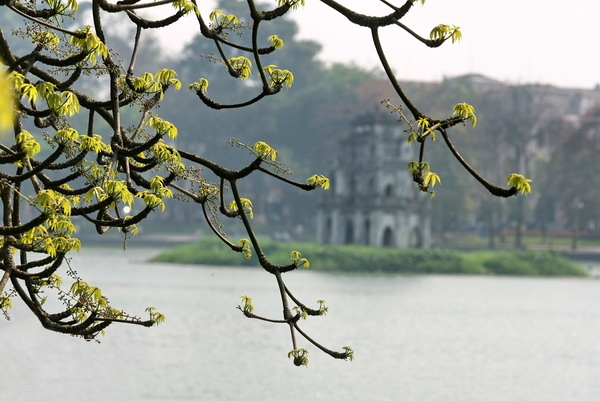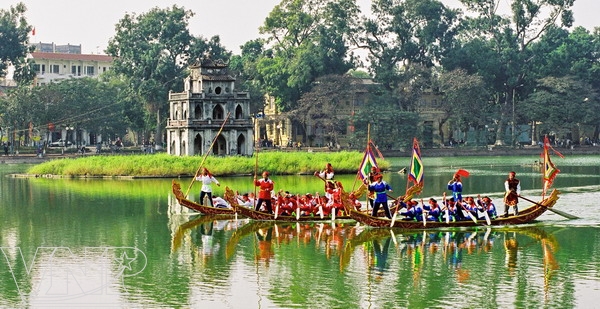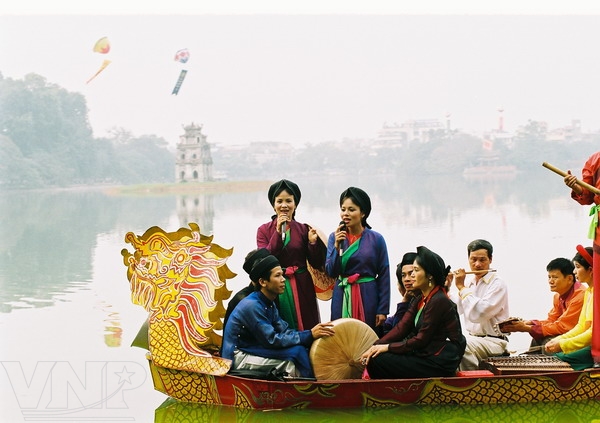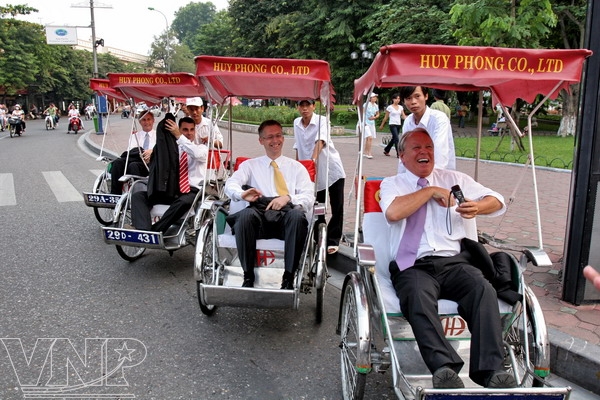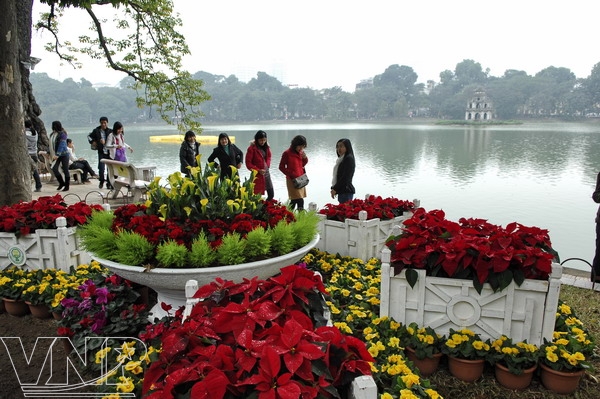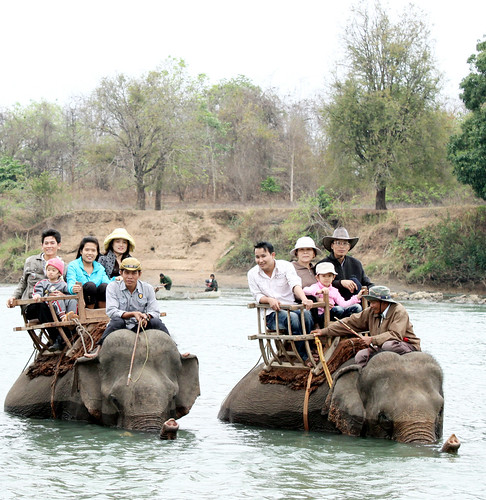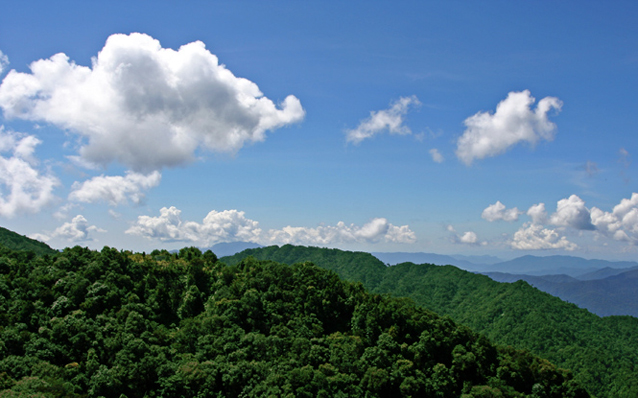Tran Hung Dao’s son was disgraced and banished to a remote
port, where he salvaged his reputation by defending the country before
his untimely death.
Though today is not a ritu-al day, Cua Ong Temple is packed with
pilgrims and the scent of burning incense is thick in the air. The
tem-ple, which is located in Cua Ong quarter, Cam Pha town, about 40km
far from north-eastern
Halong
city, is popular with Vietnamese holiday-makers, foreign tourists and
locals, especially fishermen who come here to pray for good luck before
setting sail out on the great blue yonder.
The temple is perched on a high tree-covered mountain lsacing Cua
Suot (port of Suot). According to the country’s annals, Cua Ong Temple
was built by the inhabitants of Cam Pha back in the first century AD.
The port linked the Red River delta with the northeastern parts of
pres-ent day Vietnam and beyond.
A parallel sentence on the tem-ple’s Front gate reads: “ln front of
you is the immense sea. Around you are green mountains – all around
looks like a water-colour picture.”
A HISTORICAL GATEWAY
ln january 1149, when the Ly Dynasty (1010-1225) began trading with
China and other Southeast Asian countries, Cua Suot was a bustling port
and a major national gateway.
ln order to control the port and tax Foreign merchants, local
authori- ties set up a series of customs sta-tions along the coast,
including Cua Suot, which was originally pro-nounced as “suat”, a term
related to tax in feudal times.
Before reaching the temple, visi-tors must walk up hundreds orc brick
steps snaking through the trees. As you make your way there, you can
enjoy the brilliant views – out on the sea boats look like small leaves
lying on a mirror.
A GREAT GENERAL
A The temples tutelary genie is Tran Quoc Tang, the third son of
King Tran Quoc Tuan (1228-1300), who was posthumously known as Tran
Hung Dao, one of Vietnam’s greatest generals.
During his childhood, Tran Quoc Tang was a brave, strong and
right-eous lad. But when he grew up, he somehow incurred the wrath of
his family (no one knows why) and was exiled to Cua Suot. His father
hoped that his wayward son would manage this strategically important
border gate while in exile.
Indeed, Tang proved to be a bril-liant general, and he helped
master-mind some brilliant military victo-ries against the Yuan-Mongol
invaders in the 15th century.
But Tang’s life was cut short when on a night of heavy rain and
strong wind he foolishly jumped on to a rock near the shore and was hit
by a freak wave. He was washed out to sea and at first his corpse could
not be found. Two weeks later his body finally washed up by Trac Chan
vil-lage, several kilometres away. Cua Suot was then renamed Cua Ong
(The Master’s Port) and in memory of his military exploits, the local
pop-ulation built Cua Ong Temple For him at Trac Chan — also known as
Vuon Nhan (The Longan Garden).
The temple was moved to the present site in the beginning of the 19th
century. It was built in the style of the Chinese script “Gong”, which
means there’s a lower temple (Den Ha), a middle temple (Den Trung) and
an upper temple (Den Thuong). In the lower temple, people pray to the
Maternal Spirit known in Vietnamese as Mau. The upper tem-ple is
dedicated to Tran Quoc Tang and his statue is the biggest in the temple.
Tang’s {ace looks gentle butserious and experienced. The
statue’sVermilion coat symbolises his fervent heart and devotion to his
country.
A HUMBLE MAN
Tang’s mausoleum sits behind the temple, and in front of the
mau-soleum is his tomb, which is a sim-ple, brick block. It is a
deliberately humble structure. Locals say that Tang led a simple life
Without pursu-ing fame and privilege.
ln the temple, there are also stat-ues of other generals from the
Tran Dynasty – 34 altogether – including the likes or Pham Ngu Lao, Yet
Kieu, Da Tuong, Nguyen Che Nghia and Do Khac Chung. All of whom made
great contributions to constructing and protecting the country.
THE LOCAL FESTIVAL
Although Tang died in the eighth lunar month, a festival in his
honour takes place from the second day of the first lunar month to the
end of the third lunar month. Nobody seems to know why the festival is
held at this time of year.
A palanquin procession carries Tang’s funeral tablets from the
tem-ple to a shrine in Trac Chan village. Legend has it that this was
the place where Tang’s ashes were scattered by the wind. The procession
then pro-ceeds back to the temple, following his old inspection route.
Standing in the temple amidst the smoke of burning incense and
staring at the statutes of such well- known generals who brought such
glory to the country, it is impossible not to admire the spirit of
solidarity, which made up the unvanquished strength of Vietnamese people dur-ing the Tran Dynasty.
How to get there: From HaLong city’s Bridge 20, take
National Road 18 toward Bai Tu Long Bay for about three kilomettres to
a T-junction, where Cua Ong Temple stands.
